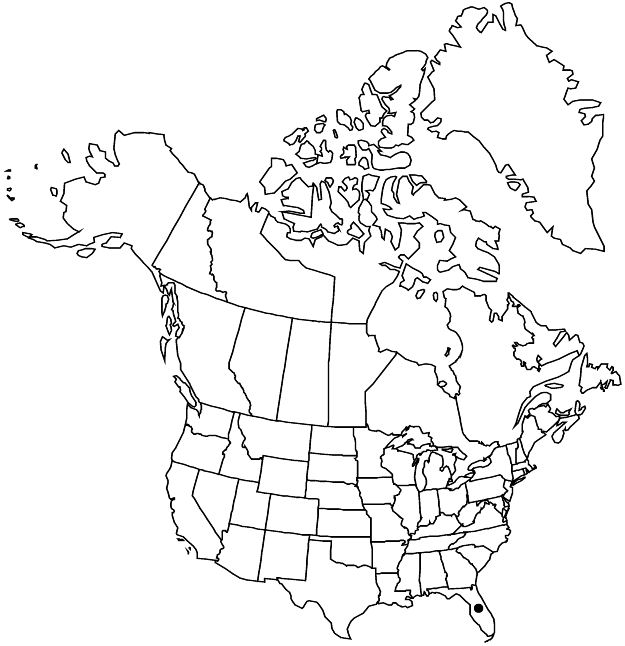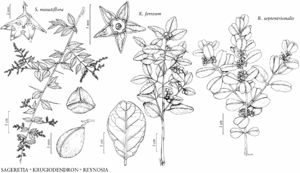Difference between revisions of "Reynosia septentrionalis"
Symb. Antill. 1: 356. 1899.
FNA>Volume Importer |
imported>Volume Importer |
||
| Line 51: | Line 51: | ||
|publication year=1899 | |publication year=1899 | ||
|special status=Illustrated | |special status=Illustrated | ||
| − | |source xml=https:// | + | |source xml=https://bibilujan@bitbucket.org/aafc-mbb/fna-data-curation.git/src/bb6b7e3a7de7d3b7888a1ad48c7fd8f5c722d8d6/coarse_grained_fna_xml/V12/V12_1101.xml |
|genus=Reynosia | |genus=Reynosia | ||
|species=Reynosia septentrionalis | |species=Reynosia septentrionalis | ||
Revision as of 20:07, 27 May 2020
Shrubs or small trees, 1.5–7 m, glabrous; trunks to 2 dm diam. Leaves: petiole 1.5–3 mm; blade elliptic-oblong to oval or obovate, 2–4 cm, coriaceous, base cuneate to truncate, margins entire, revolute, apex usually truncate-emarginate, sometimes rounded. Inflorescences 1–4-flowered. Pedicels 4–9 mm. Drupes dark purple to black, globose to ovoid or ellipsoid.
Phenology: Flowering sporadically year-round.
Habitat: Coastal hammocks, open woods, thickets, mangrove margins, dunes.
Elevation: 0–10 m.
Distribution

Fla., West Indies.
Discussion
Reynosia septentrionalis is found in the flora area in Miami-Dade and Monroe counties.
Selected References
None.
Lower Taxa
None.
